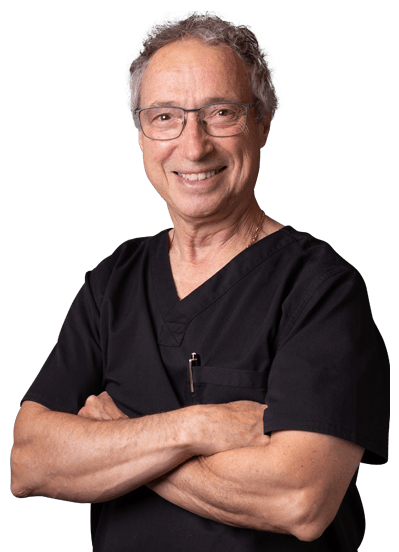Skin Issues
(The Skin Department)

Skin Issues
(The Skin Department)
604-731-5512
The Skin Department
Arbutus Laser’s Skin Department retains highly skilled physicians and technicians with over 150 years of collective experience in Aesthetic Medicine. Our team constantly undergoes advanced training and attends conferences for the best results. We prioritize state-of-the-art technology, patient satisfaction, and ethically based standards-of-care, with no salespeople or commission-based incentives.
Your unique skin concerns are assessed by our experienced professionals who consider your health history, priorities, and budget, ensuring informed decisions for desired outcomes. We are dedicated to educating and helping you achieve healthy, beautiful skin.
"The largest organ of your body deserves care"
Active Acne & Acne Scars
Active acne refers to the presence of inflamed and visible acne lesions such as pimples, papules, pustules, and cysts. Acne occurs when hair follicles are clogged with oil, dead skin cells, and bacteria. Hormonal changes, genetics, stress, and certain medications can contribute to the development of active acne.
OUR APPROACH TO TREATING ACTIVE ACNE
The goal of treating active acne is to reduce inflammation, control bacterial growth, and enhance overall skin appearance. Approaches vary based on acne severity, with severe cases referred to Dermatology. Some treatment options include Radio-Frequency Microneedling, Laser Genesis, HydraFacials™, and chemical peels based on your skin assessment.
What You Can Expect:
In your consultation, we’ll evaluate your acne and explore treatment options, including advanced skincare, non-invasive laser therapies, and prescription medications. Our aim is to reduce breakouts and clear acne, with costs varying. Prescription medications may be covered by extended health.
Peels or laser therapy start at $200 per session.
Before
After
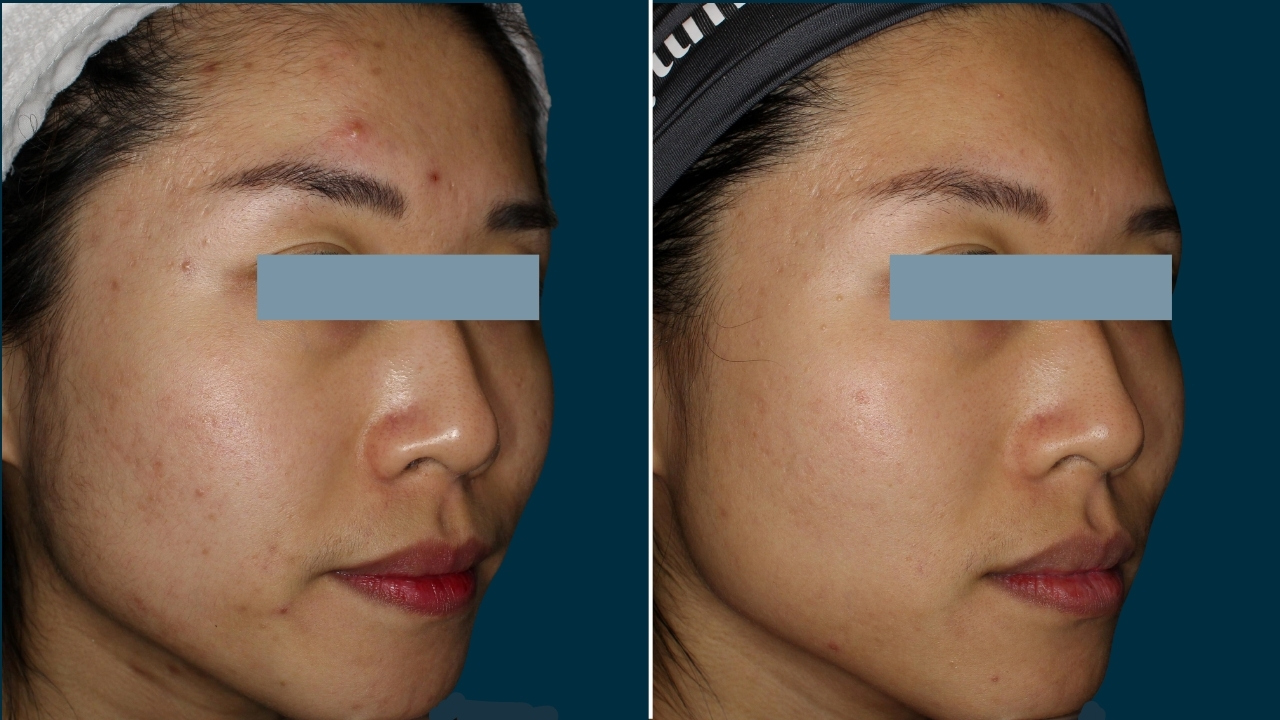
Active Acne
Before
After
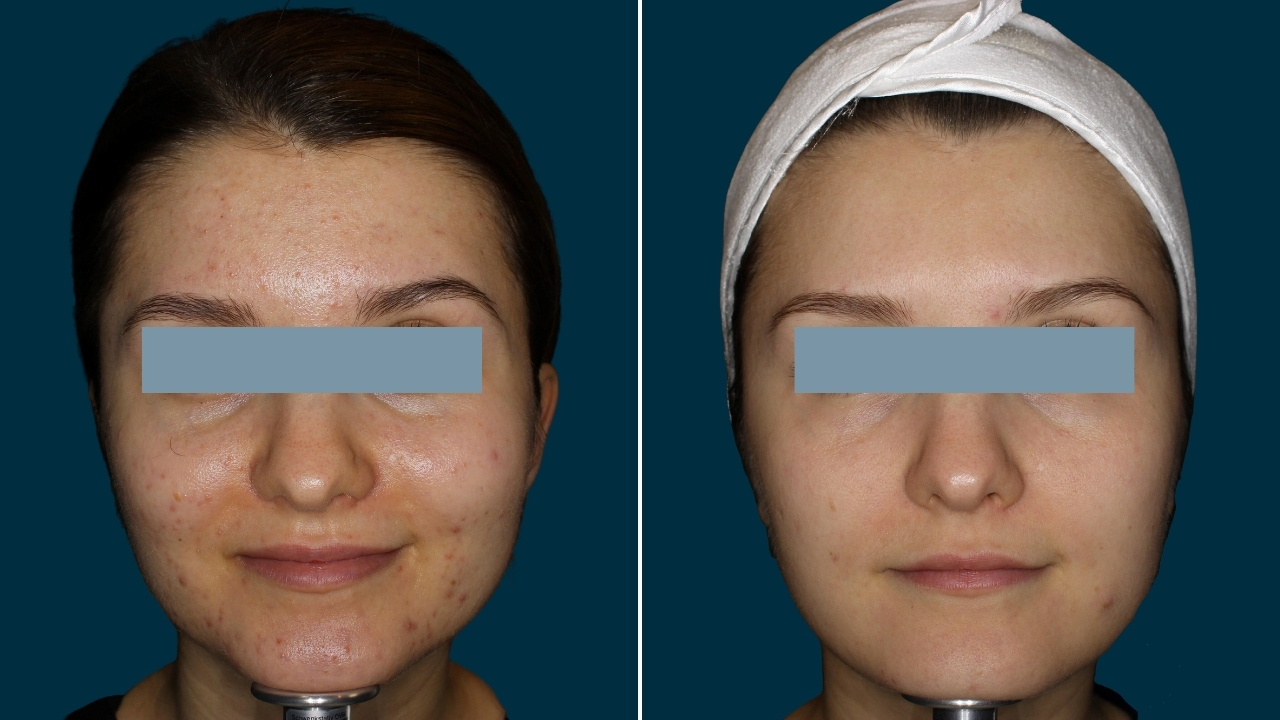
Active Acne
Acne Scarring
Acne scars are caused when active acne has damaged and repaired the dermal tissue. This results in a physical change in the structure of the skin.
Acne scars fall under a type of scarring, which can be classified as:
- Ice pick scars (narrow and deep acne pits)
- Erythematous or inflamed scars (red blotches with or without depressions)
- Depressed scars (mild, moderate, severe)
- Rolling scars (wave-like appearance)
- Boxcar scars (Broader depressions with defined edges)
OUR APPROACH TO TREATING ACNE SCARS
Lasers can improve the appearance of scars by smoothing texture and evening out color. Some devices to improve acne scarring include Radio-Frequency Microneedling, Fraxel Dual®, Venus Viva™, Picoway® Resolve, and for more severe cases Co2 or erbium lasers.
Our team has effectively treated various types of acne scars over the past 30 years. A full assessment of your scars will provide a personalized approach based on the type and severity of scarring.
What You Can Expect:
Treating acne scars requires multiple sessions. Any textural improvements (aka smoothing of the skin) from our treatments for acne scarring are permanent!
Lasers for acne scarring will usually have 3-7 days of redness and swelling.
Cover the treated area outdoors for the first 10 days post-treatment, ideally ongoing. Always use SPF 30+ sunscreen thereafter.
Treatments start at $250 per session with varying costs.
Consultation for Acne Scarring may be covered by MSP with a referral from your family physician. For more information, please call 604-731-5512.
Scars & Stretch Marks
A scar is caused when dermal tissue has been damaged and repaired. This results in a physical change in the structure of the skin. There are many types of scars, including:
- Red (inflamed) or brown (hyper-pigmented) scars
- Raised (Hypertrophic) or Keloid scars
- White (hypo-pigmented) and depressed (atrophic) scars
- Flat and hyper-pigmented scars
A stretch mark is a type of scar that develops when our skin stretches or expands quickly. The abrupt change causes the collagen and elastin, which support our skin, to rupture. As the skin heals, stretch marks may appear.
Initially, they tend to be red, purple, pink, reddish-brown, or dark brown, depending on your skin color. Over time, the color fades and the narrow bands sink beneath your skin and can feel slightly depressed.
Whether you’re dealing with hypertrophic scars, atrophic scars, pigmented scars, or stretch marks, our team will assess your specific scar type and recommend the most suitable treatments for you.
OUR APPROACH TO TREATING SCARS & STRETCH MARKS
We provide a comprehensive assessment of your scars, recognizing their unique nature. Our team utilizes advanced technologies like Fractional devices, Erbium lasers, Pulsed Dye laser, Smooth beam laser, and injections to improve skin texture and appearance. Laser Genesis may be used to stimulate collagen production and reduce redness in certain cases.
What You Can Expect:
Treating acne scars requires multiple sessions. Any textural improvements (aka smoothing of the skin) from our treatments for acne scarring are permanent!
Lasers for acne scarring will usually have 3-7 days of redness and swelling.
Cover the treated area outdoors for the first 10 days post-treatment, ideally ongoing. Always use SPF 30+ sunscreen thereafter.
Treatments start at $250 per session with varying costs.
Consultation for Scarring may be covered by MSP with a referral from your family physician. For more information, please call 604-731-5512.
Before
After
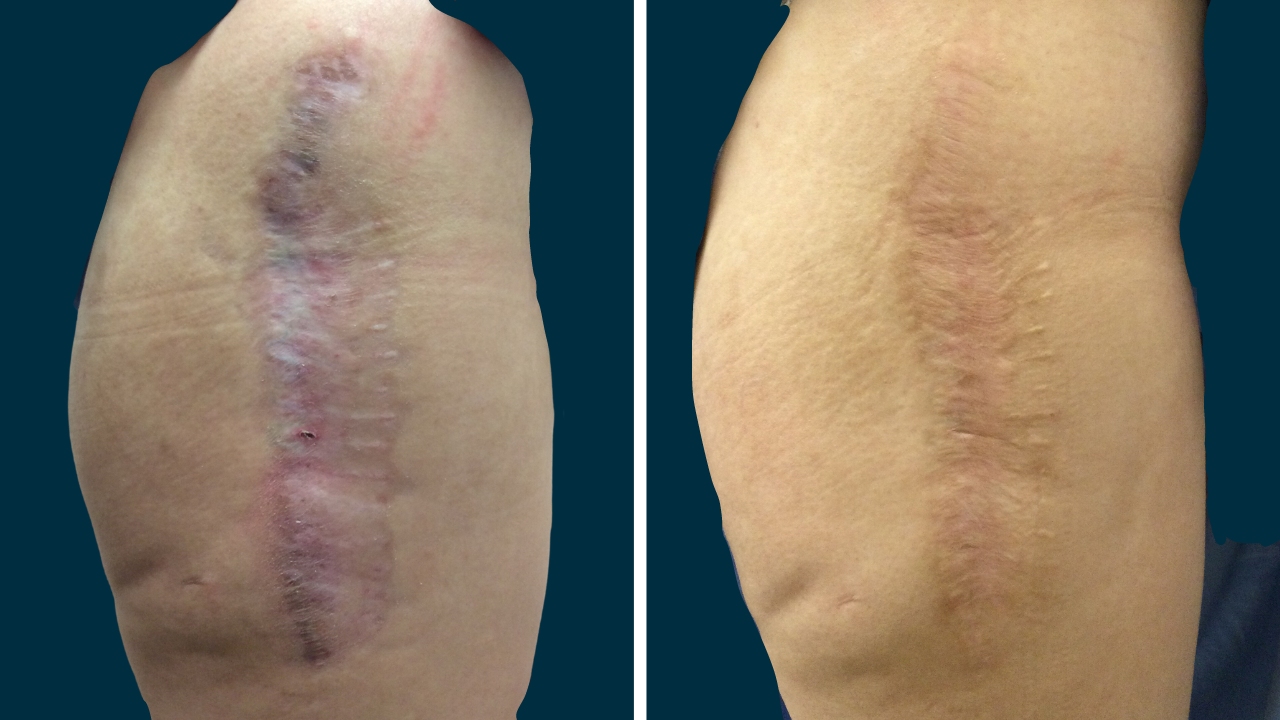
Traumatic Scar Improvement
Before
After

Stretch Marks Improvement
Large Pores
Large pores are visibly enlarged skin openings, often found on the nose, chin, inner cheeks, and forehead. Genetics play a role, but factors like sebum production, skincare, aging, environment, and acne can influence pore size.
OUR APPROACH TO TREATING LARGE PORES
Treatment of large pores may involve various methods including:
- Skincare products with ingredients like retinols, salicylic acid, niacinamide, or AHAs to control oil production and minimize pore appearance.
- Chemical peels or Hydrafacials™ to exfoliate and unclog pores.
- Laser or light therapies to stimulate collagen production, shrink pore size and improve overall skin texture.
Most technologies in our clinic generally minimize pores regardless. Our expertise in non-invasive procedures and advanced skincare aims to address ALL your concerns while effectively reducing pores.
What You Can Expect:
Discussion of your current skin care regime during consultation provides us with some insight to what your skin is being exposed to and how it is affecting your skin.
Treatment of large pores requires multiple sessions and regular maintenance is necessary. Utilizing the right skin care products also aids in minimizing pores. Our team is dedicated to educating you on suitable products for your skin and possibly reducing future maintenance treatments.
Cost of treatments and products range and it is based on your skin’s needs. Our treatments for large pores can start from $200 per session.
Before
After

Large Pores
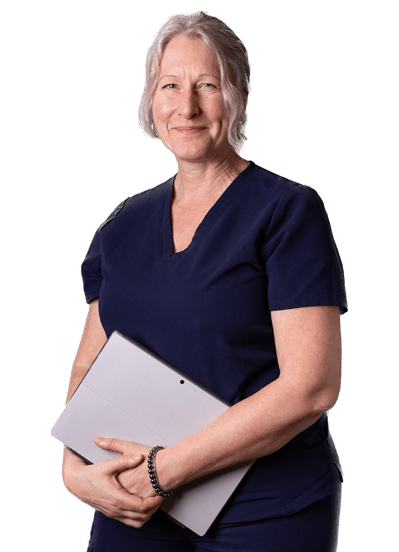
Healthy Skin,
is Beautiful Skin.
Facial Veins / Reticular Veins / Spider Veins
Facial veins, reticular veins (blue veins), or spider veins (telangiectasia) are visible blood vessels on the skin’s surface. These veins are caused by factors such as genetics, sun exposure, trauma, lifestyle, aging, hormonal changes, and certain medical conditions.
Treatment options aim to diminish or eliminate their appearance, improving the overall clarity and evenness of the skin.
OUR APPROACH TO TREATING FACIAL VEINS / RETICULAR VEINS / SPIDER VEINS
Did you know our very first laser was a vascular laser bought in 1992?
Arbutus Laser holds powerful, state-of-the-art vascular lasers along with a team of skilled professionals who specialize in vascular laser therapies. We have effectively treated various types of veins over the years!
We have several treatment options for vascular concerns, including our Pulsed Dye lasers, the IPL (Intense Pulsed Light), the Excel® V laser or long-pulsed NdYAG lasers and in some cases, electrocautery. These devices precisely target the unwanted veins, delivering energy that selectively heats and destroys the blood vessels without harming the surrounding skin.
What You Can Expect:
During the consultation, we assess your concerns and determine the best treatment options based on your skin type, treatment area location, and sun exposure.
Fair and untanned skin (including self-tanners and sunbeds) respond well to laser, while darker skin tones require sun avoidance for success.
The treatment may cause mild redness and swelling lasting from 1-7 days.
Multiple sessions may be needed.
Cover the treated area outdoors for the first 10 days post-treatment, ideally ongoing. Always use SPF 30+ sunscreen thereafter.
Treatments start at $250 per session with varying costs.
Before
After
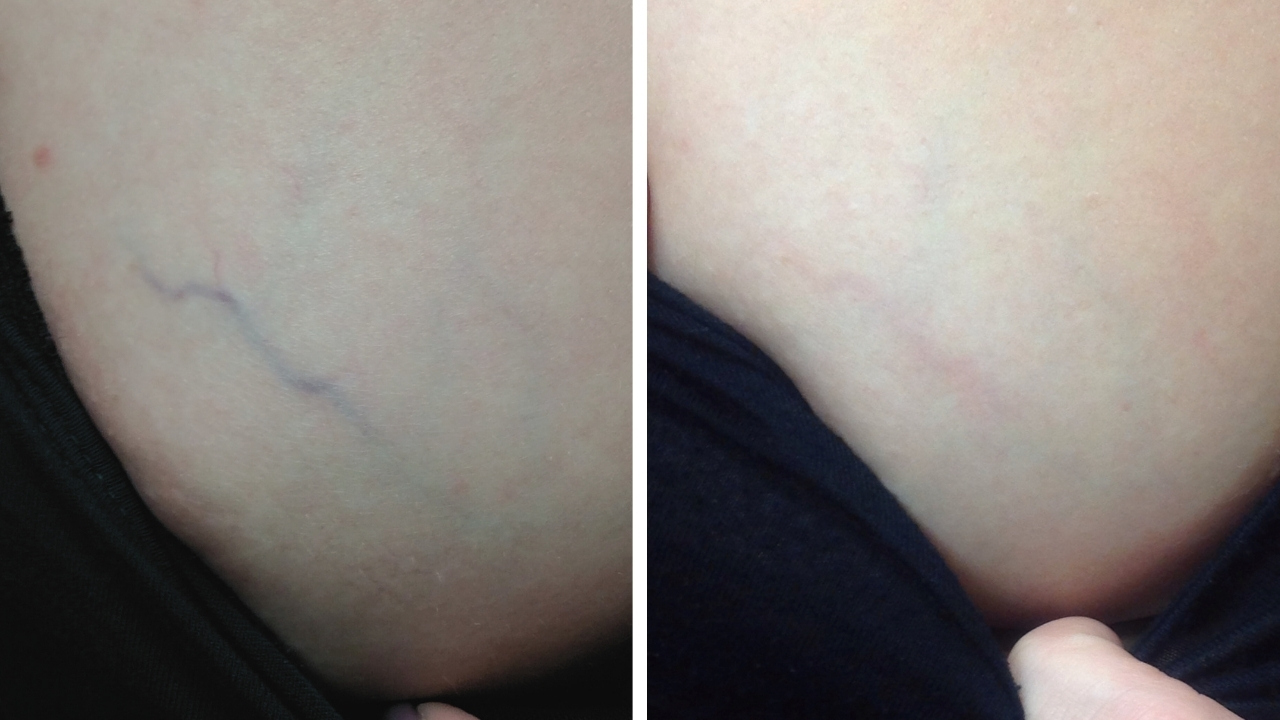
Blue Reticular Vein
Before
After

Facial Veins
Rosacea and Generalized Redness
Rosacea is a genetic condition causing inflammation, flushing, and, in severe cases, pimples on the nose, chin, cheeks, and forehead. Over time, it can lead to enlarged facial veins and a swollen nose (Rhinophyma).
Skin redness is the visible presence of red or pink patches due to factors like genetics, sensitivity, or environmental triggers.
OUR APPROACH TO TREATING ROSACEA & REDNESS
Treating rosacea and skin redness involves managing symptoms and improving skin appearance.
Medical management may include topical or oral medications to control inflammation, while laser and light-based technologies like IPL (intense pulsed light), PDL (pulsed dye laser), Laser Genesis, and Radio-Frequency Micro-needling can effectively reduce redness and flushing.
Although there’s no cure for rosacea, various approaches can significantly minimize its impact, with treatment options tailored to individual needs discussed during consultation.
What You Can Expect:
Our team determines which treatment options are best suited for your redness/rosacea based on your skin type and lifestyle. It is best to treat the skin at its fairest and ideally during the fall/winter months.
Several treatments are needed and regular maintenance is usually required thereafter.
Some treatments result in redness and swelling for 3 to 14 days post session.
Cover the treated area outdoors for the first 10 days post-treatment, ideally ongoing. Always use SPF 30+ sunscreen thereafter.
Treatments start at $450 per session with varying costs.
Consultation for Rosacea may be covered by MSP with a referral from your family physician. For more information, please call 604-731-5512.
Before
After
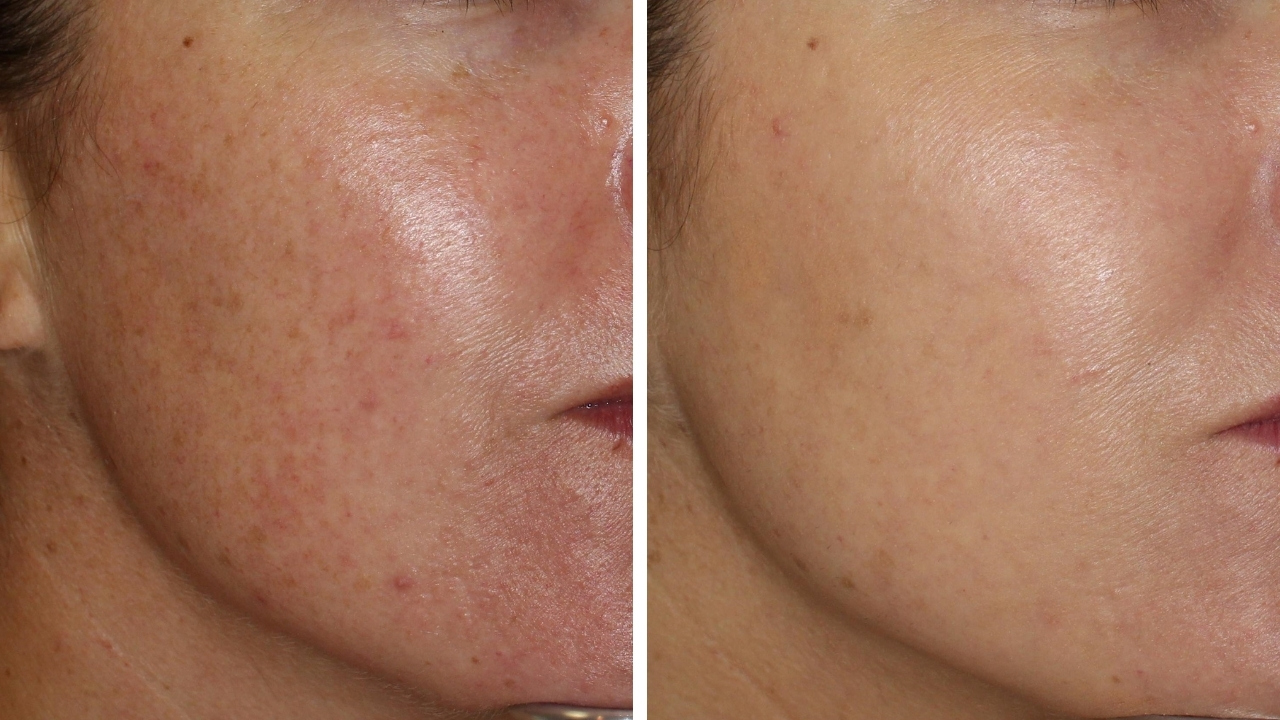
Redness
Before
After
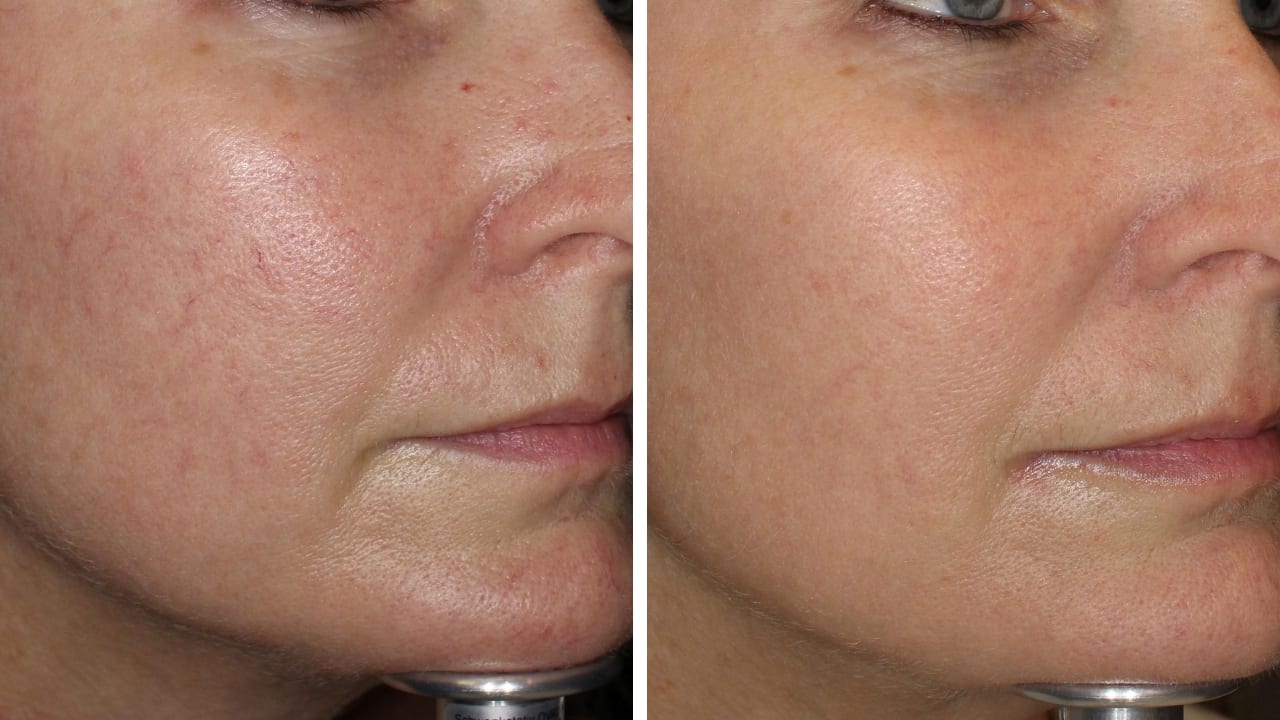
IPL Treatment for Vascular Redness
Sunspots and Freckles
Lentigines, or sun/age spots, are dark pigmented lesions found on sun-exposed areas due to prolonged UV exposure.
Freckles are small, tan spots often genetically determined, more visible in fair-skinned individuals. Though harmless, both can contribute to uneven skin tone and impact self-confidence.
OUR APPROACH TO TREATING SUNSPOTS OR FRECKLES
While sunspots and freckles are generally harmless, many seek treatment for a more even skin tone. Treatment options, including PicoWay® Laser, Fraxel® Dual, IPL, Venus Viva™, and Gmax Pro®, are determined during consultation. These devices target pigmentation without damaging the surrounding skin.
What You Can Expect:
During consultation, we assess your skin to determine the best treatment for your pigmented spots based on skin type, location, and sun exposure. Ideally, the skin should be fair and untanned for treatment, avoiding self-tanners and tanning beds.
Treatments for sunspots and freckles are quick and usually successful in 1 to 3 sessions. After treatment, pigmented lesions darken, become crusty, and gradually flake off over 5-10 days, leaving the treated area lighter.
To prevent re-pigmentation, we may use bleaching agents or non-hydroquinone lightening agents after healing.
Covering the treated area outdoors for at least 10 days (preferably ongoing) and using SPF 30+ sunscreen is crucial.
Laser treatment costs start at $250 per session.
Before
After
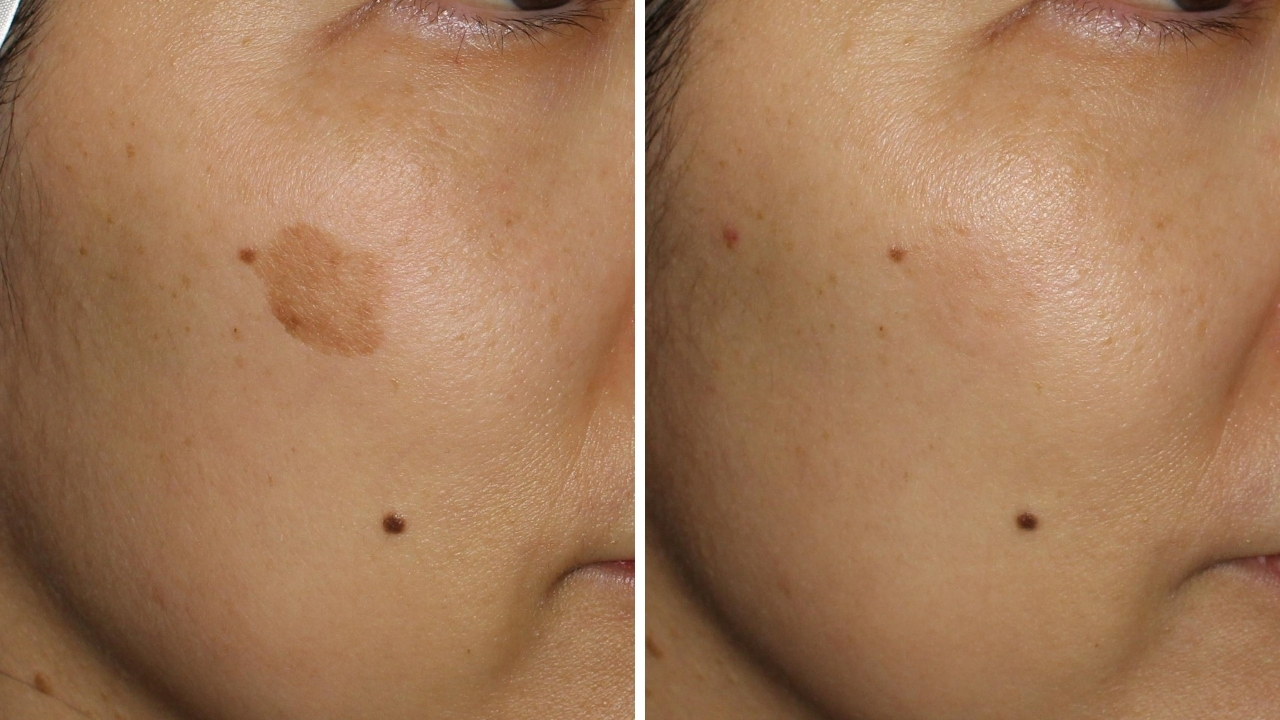
Sunspot
Before
After
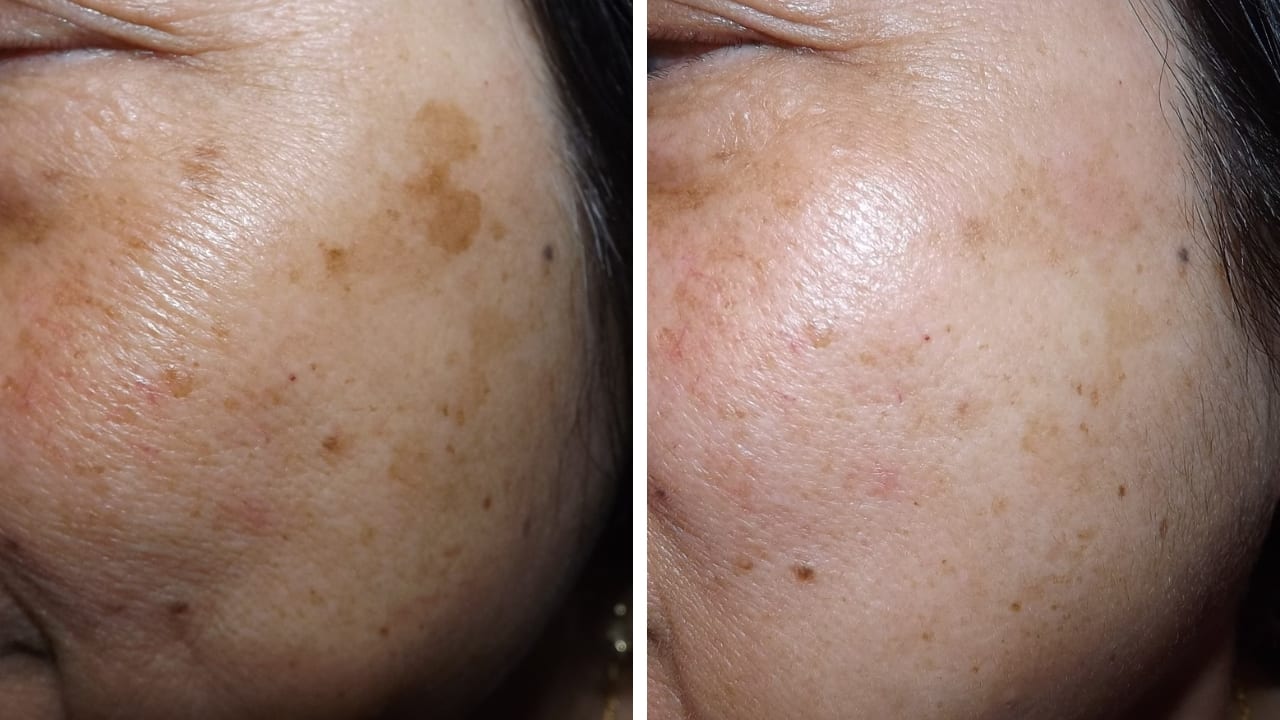
Pigmentation - Mottled Sun Spots

If it's a concern for you,
it's one for us.
Pigmentation / PIH
Pigmentation results from melanin, the skin pigment. Irregularities in melanin production lead to issues like hyperpigmentation (darkening) or hypopigmentation (lightening). Common forms include sun damage, sun spots, age spots, post-inflammatory hyperpigmentation (PIH), and melasma.
OUR APPROACH TO TREATING PIGMENTATION CONCERNS
Treatment for pigmentation depends on the condition and its severity, determined during a comprehensive consultation. Our team assesses your skin type, treatment area, and sun exposure, addressing multiple concerns like redness and fine lines.
Our clinic offers diverse treatment options, such as IPL, Fraxel® Dual, Radio Frequency Microneedling, Venus Viva™, and PicoWay® Resolve, alongside medical-grade skincare and mineral sunscreens.
What You Can Expect:
During the consultation, we discuss your pigmentation, providing insights into your skin exposure and treatment options.
Pigmentation treatments can target specific areas or the entire face and body parts like arms, neck, chest, back, and legs. Multiple sessions and potential maintenance are typical.
Post-treatment, pigmented lesions darken initially and flake off over 5-10 days, leaving the area lighter. To prevent re-pigmentation, we may use bleaching agents or non-hydroquinone lightening agents after healing.
Some treatments may cause mild to moderate redness and swelling for 3 to 14 days. Covering the area outdoors for at least 10 days and using SPF 30+ sunscreen is crucial.
Laser treatment costs start at $450 per session.
Before
After
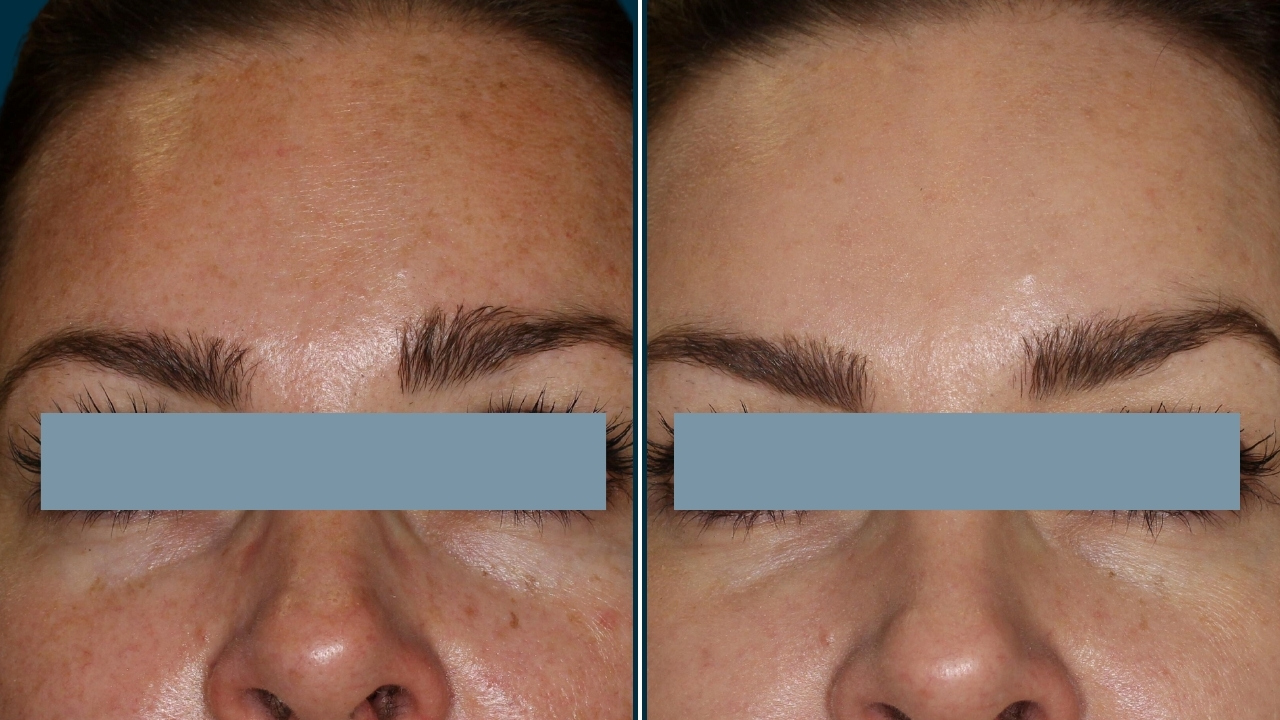
Pigmentation
Before
After

Pigmentation and age spots
Melasma
Melasma is a troublesome hyperpigmentation disorder, hormonally dependent and commonly affecting females during pregnancy (the “mask of pregnancy”), the use of birth control pills and/or menopause. It is one of the most difficult conditions to treat, and may be both superficial (epidermal) or deep (dermal). Melasma will often worsen with sun exposure, stress and hormonal changes.
OUR APPROACH TO TREATING MELASMA
We empower patients to control melasma through education and support. During consultation, we identify causes and triggers, discussing preventative measures.
While melasma isn’t a health risk, it concerns many cosmetically. Treatment aims to lighten patches and achieve an even skin tone, requiring ongoing maintenance.
For melasma, we favor gentle device-based treatments like PicoWay® Laser, RF Microneedling, Fraxel®, and Clear and Brilliant®. Topical creams, including hydroquinone (for short-term use), and safe, non-hydroquinone skincare products are available.
Melasma’s recurrence is common even with successful resolution, making continuous sun protection (SPF 30+) crucial. Wearing sunscreen, seeking shade, using protective clothing, and minimizing sun exposure manage melasma effectively.
What You Can Expect:
During your melasma consultation, we learn about your skin exposure and discuss treatment options.
Melasma is unique, and treatments vary. Whether using topicals or lasers, results take weeks to months to fade. Consistent use of topicals or laser therapy is crucial, with maintenance treatments often required.
Laser treatments for melasma usually have minimal downtime. Costs start at $350 per session, and products begin at $100.
Consultation for Melasma may be covered by MSP with a referral from your family physician. For more information, please call 604-731-5512.
Before
After
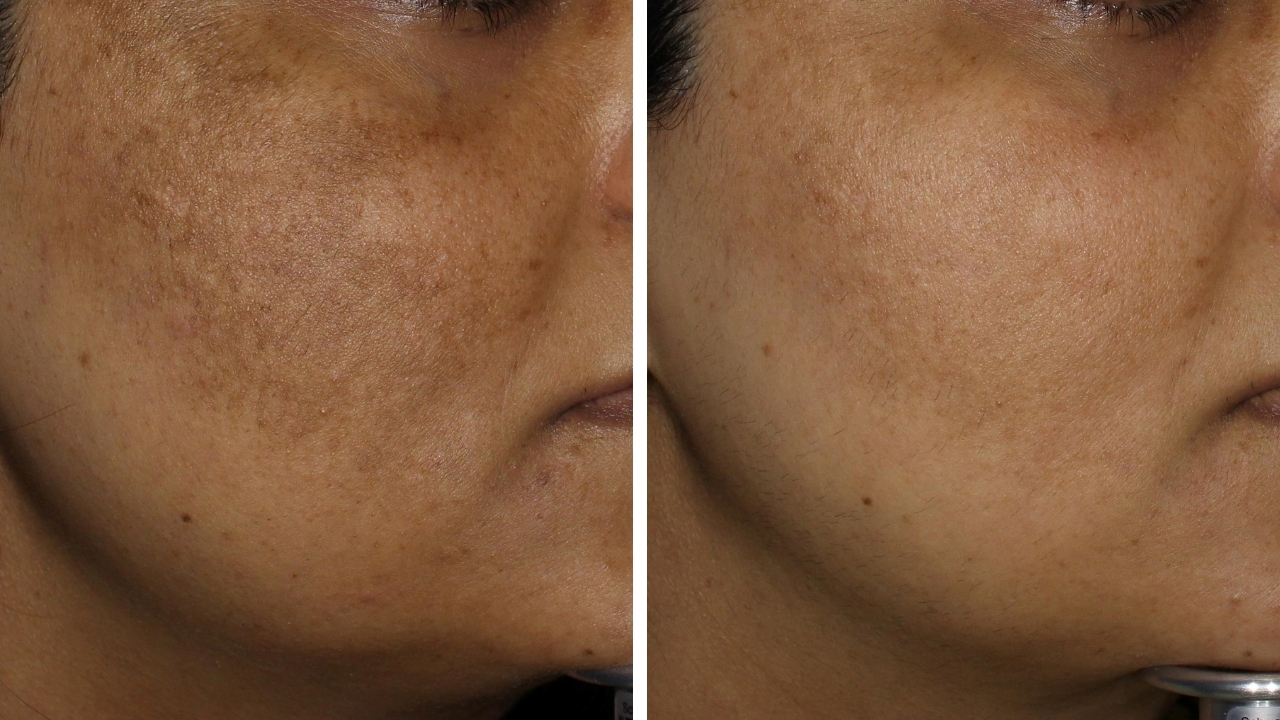
Melasma
